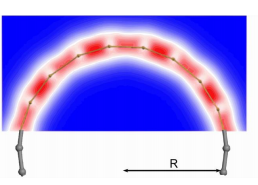Chemists have calculated that chains of double or triple-bonded
carbon atoms, known as carbyne, should be stronger and stiffer than any
known material.

The
sixth element, carbon, has given us an amazing abundance of
extraordinary materials. Once there was simply carbon, graphite and
diamond. But in recent years chemists have added buckyballs, nanotubes
and any number of exotic shapes created out of graphene, the molecular
equivalent of chickenwire.
So it’s hard to believe that carbon has
any more surprises up its sleeve. And yet today, Mingjie Liu and pals
at Rice University in Houston calculate the properties of another form
of carbon that is stronger, stiffer and more exotic than anything
chemists have seen before.
